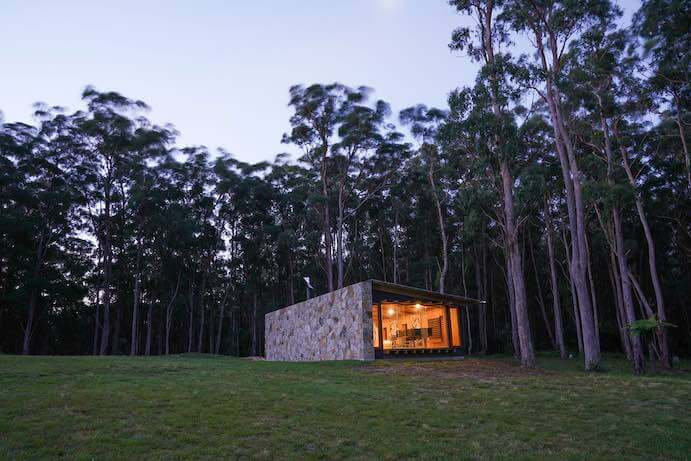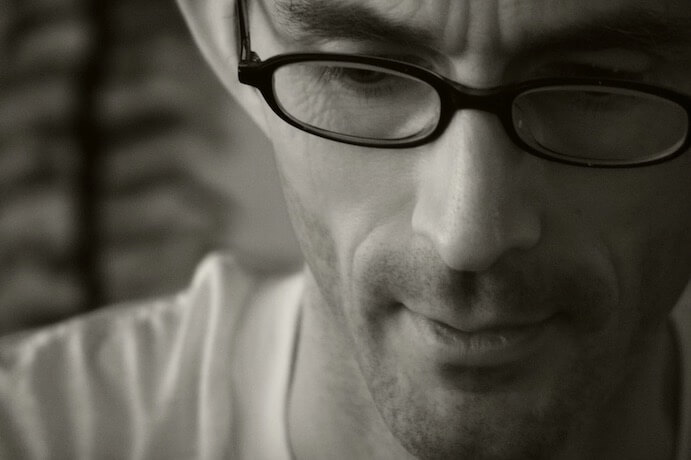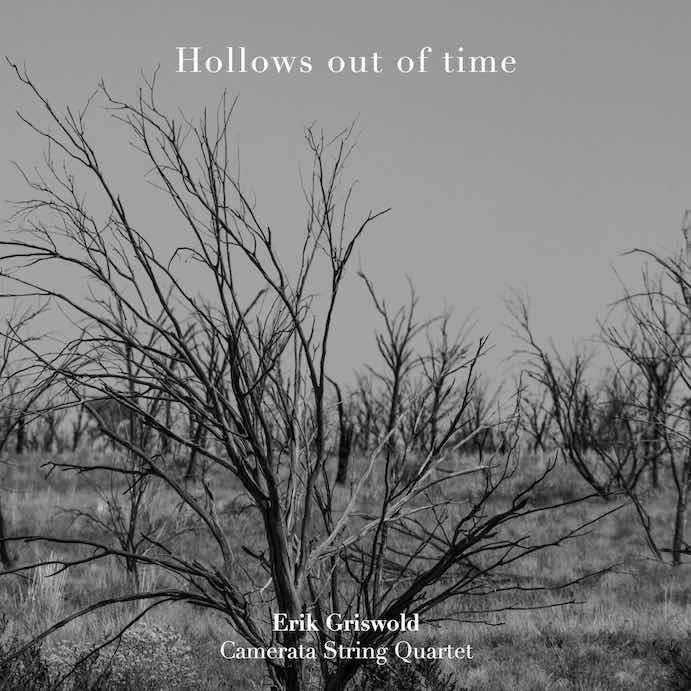For nearly two decades, Australian-American composer Erik Griswold has been writing and performing music for prepared piano. His latest album, Hollows out of time, is the debut release from the record label arm of Harrigans Lane Collective, a sprawling interdisciplinary artist collective in the bush of Eastern Australia. On Hollows out of time, the eponymous 11-movement piece for prepared piano and string quartet pairs Griswold’s particular specialization with members of Camerata, a forward-thinking Queensland chamber orchestra. The entire project was a commission to celebrate the opening of Harrigans Lane’s new chamber music building named Lagavulin, meaning “hollow before the mill.”
Much of the work coming out of Harrigans Lane, Hollows out of time included, focuses primarily on a sense of place, which is of particular interest to the founders of the program. The Collective takes care to recognize the traditional custodians who lived on the land before them, specifically the Jukembal, Kamileroi, and Bundjalung aboriginal nations. The compound is also populated with visual artists, writers, architects, conservationists, and others, all of whom have specific intentions to engage artistically with the land. When that rich history is mixed with the frankly stunning location along Australia’s Granite Belt, there’s a lot of inspiration to work with in any medium.

Lagavulin chamber music venue–Photo by Richard Brimmer
Hollows out of time feels like a place where the listener can go to think. Each movement, captivatingly performed by the composer and string quartet, feels intimate and alive with constant forward momentum. “Palestrina’s squeaky wheel,” the opening movement and one of the more rhythmically kinetic, sets the tone by introducing orchestrational tactics that are on display in the subsequent movement. The first notes from the prepared piano sound like something out of Harry Partch’s workshop–a short, muffled, mid-range pattern like a mixture of tuned bongos and a twig snapping. Pizzicato strings quickly double the piano motif, followed by harmonics in the violin, and soulful bending double-stops in the cello. Pairs of instruments work together to create a blueprint for the rest of the piece, where traditional instrumentation or technique complements an advanced or non-traditional technique.
“Humid hours,” one of the more evocative and literal sounding scenes, is one of the longest and slowest movements where the dripping sweat is heard in the string quartet’s smearing lines. “Whorls and eddies” is perhaps the knottiest movement, with clustered string harmonies and a decidedly dramatic middle section that features a solo cello line singing out in despair.
“A touch of noir” utilizes a bending cello bass-line that drops into the rhythmic pocket created by the prepared piano’s metallic ostinato, giving the effect of a devilish violin soloing over an infernal combo. “Drifting clouds,” however, releases any tension, as the relentless moderato ostinatos are briefly tamed, allowing the strings to imagine shapes and dance in the spaces above. This particular movement sets the tone for the final three movements, which turn decidedly hopeful. An underlying lesson perhaps is thus presented, as if Griswold is showing us that time spent quietly ruminating, and taking time to see the shapes in the clouds is time well spent. The piece ends with “Águas do tempo,” which is a quiet, intimate resolution to our journey with the piano’s bell tones rising up to the highest registers.

Erik Griswold–Photo by Sharka Bosakova
There are stories or scenes in each of these movements that are not explicitly stated, but hinted at. This reviewer can attest that listening to the piece on headphones while traversing my natural environment was extremely satisfying, in part because the pace and slow unfolding of each scene hit on some sort of natural rhythm deeply buried in both my body and my psyche motivating me to keep going and to observe. I can imagine that seeing Hollows out of time performed on stage at Lagavulin, the space for which it was written, would have been a completely different experience as it was detached from my ears.
It’s endlessly fascinating to find that the techniques of a prepared piano–a rattling piece of paper between strings, a heavy book stifling the high-frequency resonances of the upper register–can have the same emotional affect as its pure, traditional counterpart. An inability to pinpoint exactly “what is that sound?” gives Hollows out of time life and ingenuity, and it is successful in drawing the listener deeper and deeper into the musical bush. Erik Griswold and company have together created a captivating musical experience that feels both otherworldy and soothingly familiar. Hollows out of time is a work that was written to be focused on its personal sense of “place,” in this case a beloved, isolated patch of land in Eastern Australia. And with this album’s release, we’re welcome to come visit.






















